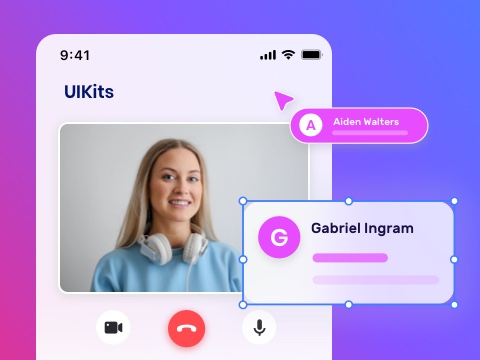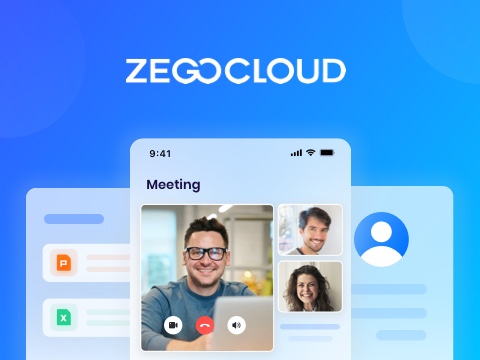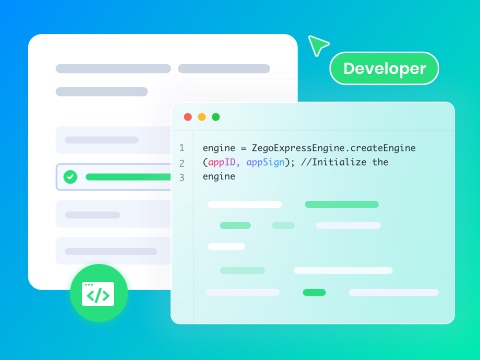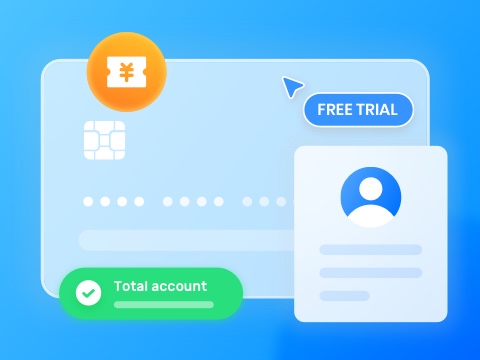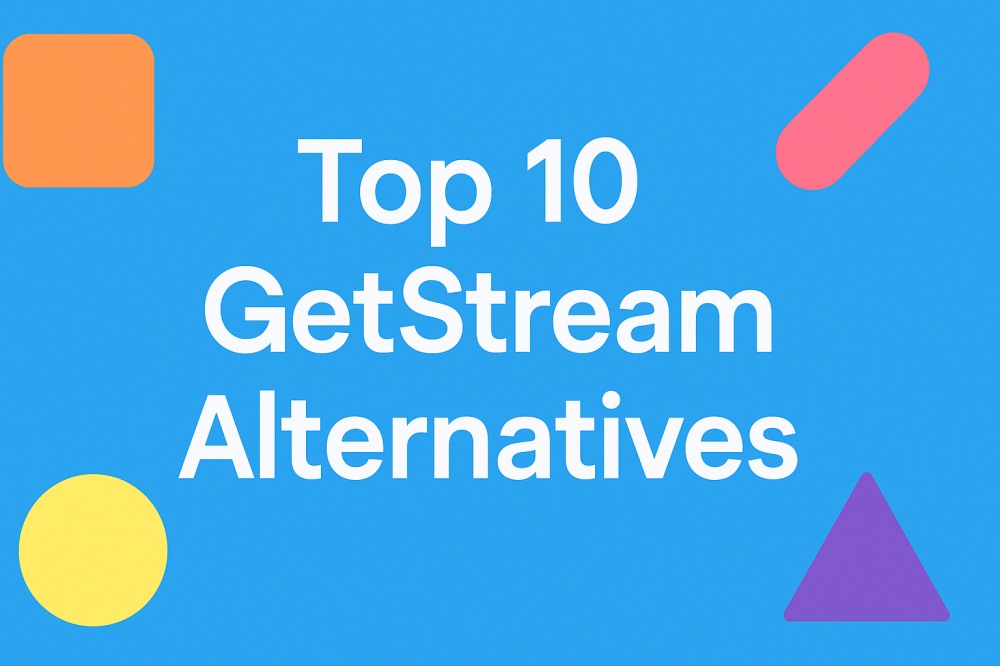The need for smooth and fast app experiences is growing as more people connect online every day. At this point, developers usually choose GetStream for chat, activity feeds, and notifications in their apps. However, not every project has the same needs or budget, so exploring other tools becomes important. In this guide, we will explore the top 10 GetStream alternatives to help you find the perfect match.
What is GetStream?
GetStream is a service that assists developers in creating in-app chat and activity feeds efficiently and fast. In addition, it provides a number of SDKs and APIs, so you can either customize or use pre-made UI components in your app. Plus, this flexibility allows developers to build exactly the experience their users require. The platform supports millions of users in a single channel, ideal for apps with high traffic.
Besides, it guarantees ease of communication and interaction with users due to its quick API response. Additionally, even developers can incorporate AI chatbots to make more interactive experiences. While it is powerful, some projects may prefer tools with different pricing, features, or integrations. That is why exploring GetStream competitors can help you find a solution that fits your exact needs and development style in 2025.
Why Do You Need GetStream Alternatives?
While GetStream offers useful features, some situations require more flexibility, customization, or advanced tools. Below, we will discover a few reasons why you must consider the top Stream alternatives that better meet specific needs:
- Structured Messages: Many businesses need structured message formats like polls or embedded actions, which enhance user interaction. Without these tools, important workflows for marketplaces, healthcare apps, and customer platforms can feel incomplete.
- Call Stability: Voice and video calling features sometimes lack full stability, which makes them harder to trust for regular operations. Moreover, many competitors provide smoother and more reliable solutions that improve real-time interaction for both users and teams.
- UI Limits: Besides, the basic UIKits can also limit how deeply businesses can customize the features to fit their unique workflows. So, more advanced kits help speed up development while offering richer and prebuilt logic.
- SDK Flexibility: Some projects require SDKs that support a wide variety of tech stacks or frameworks. At the same time, limited SDK flexibility can slow down innovation and force unnecessary workarounds.
- Global Performance: In addition, latency can increase if data is stored in a single far-off region, slowing user experience. Thus, better performance and multiple regional data centers improve global reliability.
10 Best GetStream Alternatives to Try
Selecting the right platform is important for smooth messaging and calls. So, this section lists the top 10 GetStream alternatives to help users find reliable and feature-rich tools for communication in 2025:
1. ZEGOCLOUD
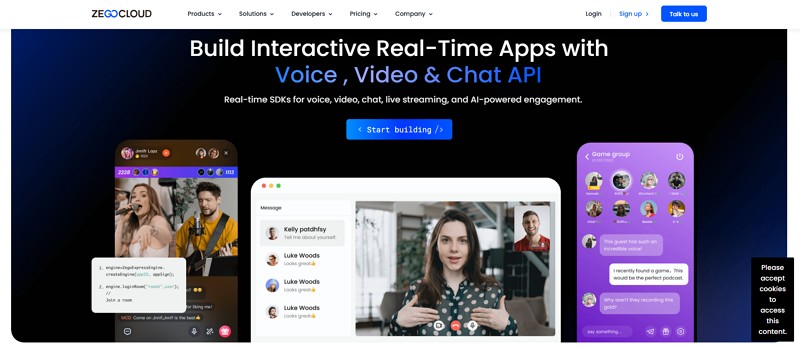
It is a famous and versatile platform for adding voice, video, and messaging features to apps. Plus, ZEGOCLOUD supports both one-on-one and group voice calls with prebuilt UIKits for quick integration. Besides, developers can add real-time video calls using robust APIs and SDKs across multiple platforms. This dedicated platform also enables low-latency under 300ms live streaming with multi-hosting, audience interaction, and monetization tools.
In addition, ZEGOCLOUD provides real-time analytics dashboards for tracking engagement and usage. Its customizable UI components allow rapid deployment and seamless branding. A collaborative whiteboard supports education and interactive meetings. This dedicated platform also offers push notifications, which keep users engaged and informed while streaming and chatting. These features make ZEGOCLOUD a strong option among GetStream competitors in 2025.
Key Features
- In-App Chat: Developers can add various instant messaging features with the help of ZEGOCLOUD, such as typing notifications or emojis.
- Desired Integration: You can also access REST APIs and SDKs in Android, iOS, Web, Flutter, and React Native.
- AI Enhancements: It combines voice AI, live translation, virtual backgrounds, and face beautification for a more engaging experience.
- Scalable Space: The 500+ edge nodes in the world also guarantee that ZEGOCLOUD will be low-latency, reliable, and smooth anywhere.
- Customizable UI: It is able to launch prebuilt or white-labeled UI elements in a short time, and these apps can easily have consistent branding.
Pros
- Flexible developer tools, including documentation and 24/7 technical support.
- Easily supports one-on-one and group voice/video calls in your apps.
Con
- Certain capabilities can be too much to handle for new users or small development teams.
Use Cases
- Telehealth Services: Support secure video consultations between physicians and patients that have end-to-end encryption and privacy compliance.
- E-Commerce Platforms: Add chat support for customers and video consultations to make the users more satisfied.
- IoT Applications: Combine voice and video connectivity to connected devices that improve monitoring and remote control.
- Entertainment Apps: Allow people to share videos, add AI effects, and chat and react.
- Gaming Applications: Integrate group voice and video calls for team coordination and immersive multiplayer experiences efficiently.
2. Sendbird
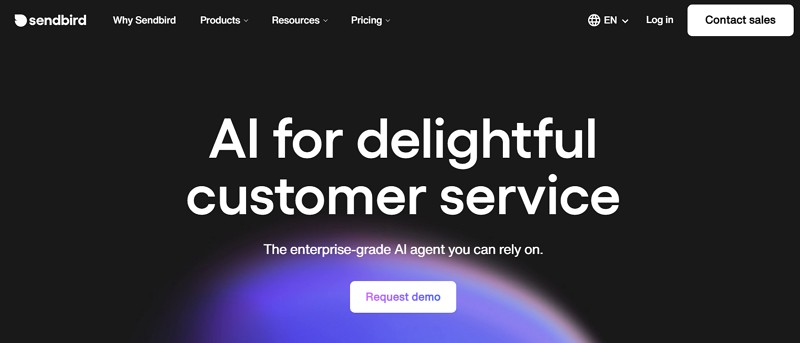
It is an advanced platform that features real-time and offline messaging on the web and mobile. Plus, Sendbird enables the user to remain connected even when one is not constantly online. The platform allows group chat of up to 20,000 members, which makes it perfect for a team or community. Additionally, it offers message search capabilities for quick access to important conversations, which makes it a great GetSream alternative.
Key Features
- Offers enterprise-level SLA plans to ensure uptime and service reliability for businesses.
- Integrate AI agents for enhanced user interactions and automated responses in conversations.
- In addition, pushes notifications to notify users immediately about new messages or critical updates.
Pros
- Safe data management can be guaranteed by high adherence to the regulations, such as GDPR and SOC2.
- Moreover, analytics dashboards give information on user engagement and messaging trends.
Cons
- High prices may not suit small projects or startups that have low budgets.
- Its complex implementation also requires technical expertise for integration.
Use Cases
- Enhances gaming apps by integrating group chats and voice messaging for team coordination.
- Powers marketplaces with structured messages, notifications, and moderation for secure transactions.
3. Twilio
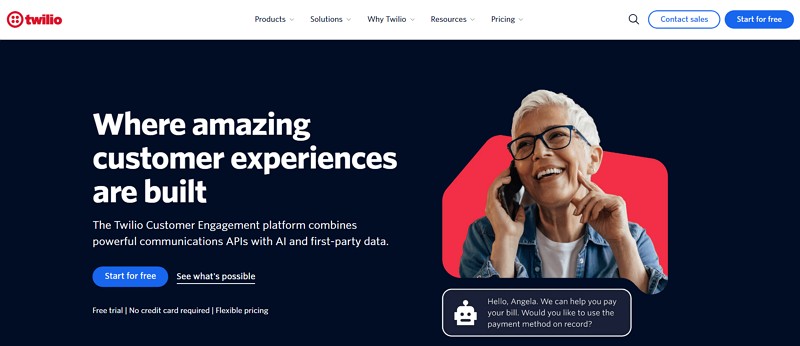
Twilio is a powerful Customer Engagement platform that integrates messaging APIs and AI to enhance efficiency. Besides, its Messaging API enables delivery of alerts and marketing messages over several mediums such as SMS, MMS, and RCS. Moreover, the Conversations API enables in-app chat solutions for commerce and customer support. Its 99.9% uptime and reliable infrastructure make Twilio a flexible choice while considering GetStream pricing for cost-effective solutions.
Key Features
- WhatsApp integration enables the sending of notifications and promotional messages using the famous platform.
- Twilio SDKs and APIs can easily integrate with web, mobile, and enterprise applications.
- The HIPAA compliance also provides the safe processing of sensitive information of users worldwide.
Pros
- Supports 2FA authentication through the Verify API to enhance security and prevent fraud.
- In addition, a centralized platform allows unified management of multiple messaging channels effectively.
Cons
- Dependence on multiple external channels can introduce potential downtime.
- Some advanced features also require higher-tier plans, increasing overall operational costs.
Use Cases
- Run marketing campaigns using SMS and MMS messages to engage target audiences.
- Offer personalized customer care using WhatsApp or Facebook Messenger for faster response and satisfaction.
4. Pusher
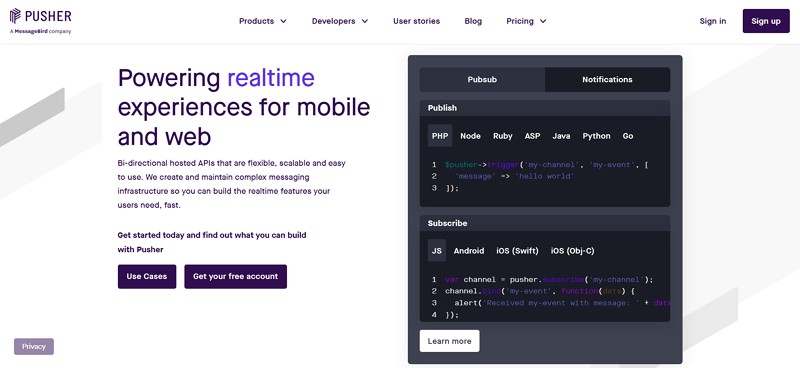
Pusher is one of the best GetStream alternatives, as it is a lightweight and real-time API platform to develop live features. Besides, it employs WebSocket messaging to provide real-time updates with low latency to web, mobile, and IoT applications. Plus, Presence Indicators let developers track online status and availability of users in real-time communication environments. Its client events also support peer-to-peer data exchange without routing through servers, which improves responsiveness.
Key Features
- Includes SDKs for popular programming languages to ensure easy server and client-side integration.
- Recovers connections automatically to maintain consistent service during network interruptions or drops.
- Handles multiple concurrent channels for delivering targeted updates to segmented user groups.
Pros
- Delivers reliable data with automatic reconnection during network disruptions or failures.
- In addition, uses secure authentication methods to protect active channels and user data.
Cons
- Lacks built-in chat-specific features, requiring extra development effort for customization.
- Alongside that, it offers minimal scalability for extremely high-volume messaging workloads.
Use Cases
- Powers live sports scoreboards by broadcasting instant match updates to fans worldwide without delays.
- Stream breaking news headlines to web and mobile apps as events unfold without refresh.
5. Ably
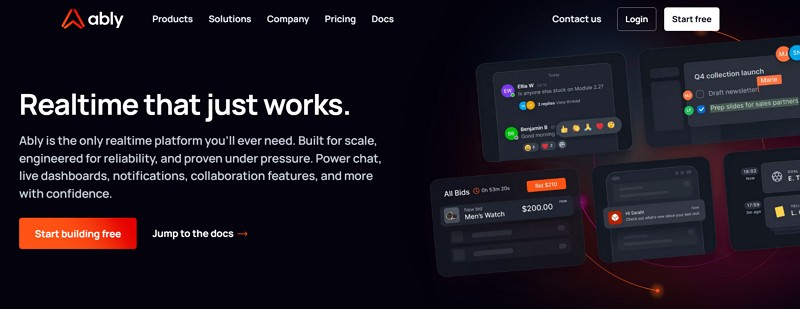
Ably provides Pub/Sub APIs with message guarantees to enable reliable real-time experiences at massive scale effortlessly. Moreover, it offers scalable chat APIs designed to handle high user loads without performance degradation or interruptions. Plus, Ably’s LiveSync feature reliably syncs backend databases with frontend clients, ensuring instant data updates for millions globally. Built-in integrations connect with webhooks and cloud services, enhancing flexibility among top Stream alternatives.
Key Features
- Allows routing of data through the US or EU regions to meet compliance and performance requirements.
- Moreover, supports the creation of custom CNAME endpoints, enabling consistent branding and control over connection domains.
- Provides SSO and SCIM provisioning for streamlined authentication and automated user lifecycle management processes.
Pros
- Ensures 99.999 percent uptime with SLA, maximum reliability of mission-critical applications and services.
- In addition, offers Firehose integrations supporting Kafka, Pulsar, and Kinesis for continuous real-time data streaming.
Cons
- An excessive number of integrations can cause clutter without proper management.
- Requires a consistent internet connection, which makes offline access to updates challenging.
Use Cases
- Assists online gaming platforms with real-time chat, leaderboards, and in-game notifications to enhance multiplayer engagement.
- Supports remote onboarding of employees by authenticating personal documents and identity without face-to-face meetings.
6. Firebase
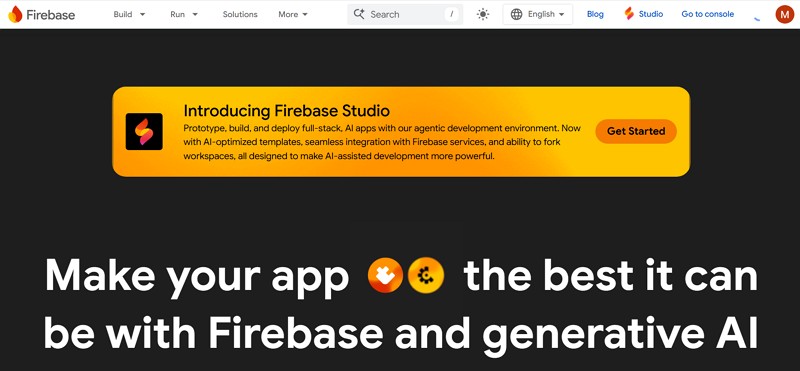
Firebase appears among GetStream alternatives for its robust and developer-friendly feature set. Moreover, its Realtime Database syncs JSON-based data across all connected clients in milliseconds to enable effortless live updates. Besides, Cloud Firestore provides scalable storage with expressive querying capabilities for flexible data handling. Plus, offline support ensures local data persists on devices and synchronizes changes once connectivity returns. Additionally, Firebase strengthens app security by integrating Authentication with declarative rules.
Key Features
- Cloud Functions executes serverless backend logic triggered by Firebase, HTTP, or scheduled events.
- Analytics also offers free app usage insights to track engagement, behavior, and traffic patterns.
- App Check protects backend resources by verifying that traffic originates from your authentic app.
Pros
- Cloud Storage safely stores and serves user-generated files at scale via Google Cloud infrastructure.
- Plus, in-app messaging enables targeted UI messages delivered based on user behavior and Analytics.
Cons
- Real-time database querying is limited to single keys, lacking filtering and complex query support.
- In addition, pay-as-you-go pricing becomes unpredictable and expensive at larger app scales.
Use Cases
- Building real-time collaborative tools like chat apps or multi-user document editors effortlessly.
- Creating prototypes or MVPs quickly thanks to extensive prebuilt integrations and managed services.
7. Agora
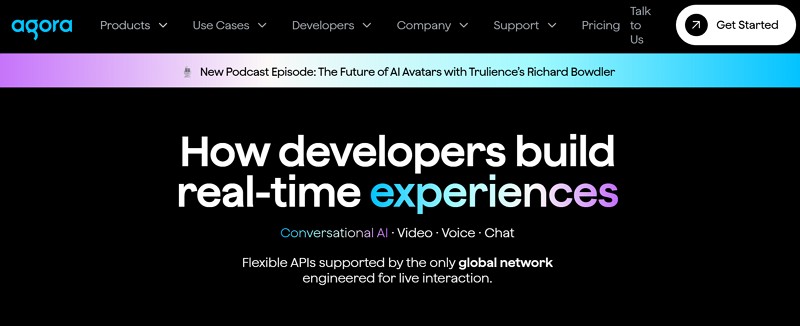
Agora stands out among GetStream competitors for its strong real-time communication features. Plus, its SD-RTN global network delivers ultra-low latency and highly reliable video and live streaming. Moreover, cross-platform SDKs enable effortless integration across iOS, Android, web, and embedded devices for consistent user experiences. This Video Calling API also supports HD video, screen sharing, recording, and AI enhancements. Additionally, its Chat SDK includes offline messaging, read receipts, typing indicators, etc.
Key Features
- In live broadcasts, ultra-low latency live streaming maintains interaction with the audience.
- Alongside that, HLS live streaming supports better buffering under poor network conditions for reliability.
- In addition, HD video calling scales reliably even with thousands of concurrent participants.
Pros
- Flexible capture of cameras and microphones is enabled by multiple audio and video tracks.
- AI-powered audio enhancement adds spatial audio, noise suppression, and gain control for clarity.
Cons
- Documentation is sparse and outdated, making integration and configuration frustrating for developers.
- Moreover, achieving resilient call quality across varied networks demands a high development effort.
Use Cases
- Empowering telehealth platforms with real-time video consultations between patients and professionals.
- Besides, powering customer support systems with live video calls to assist and troubleshoot user issues.
8. MirrorFly
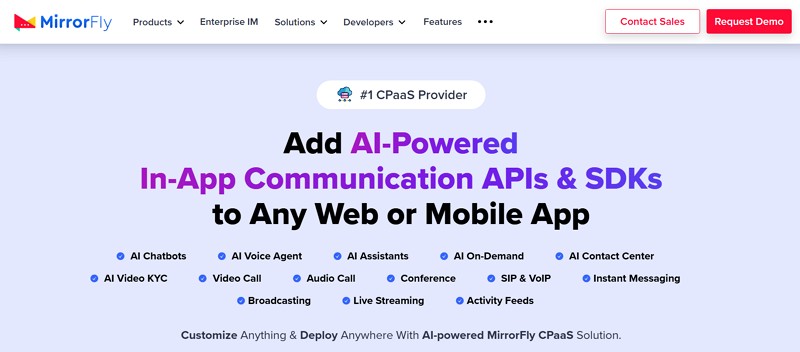
Among the Stream alternatives, MirrorFly has the most comprehensive and customizable real-time communication features. Furthermore, its Chat SDK enables secure, scalable in-app messaging with read receipts and reactions. Moreover, the HD Video Call API delivers HD video interactions with conferencing, adaptive bitrate, and camera control. Its HQ Voice Call API also ensures crystal-clear voice conversations with SIP/VoIP integration and low latency.
Key Features
- 1000+ in-app communication features like messaging, audio, video, live streaming, and SIP calling.
- UIKits includes 100+ prebuilt components for constructing branded user interfaces efficiently.
- In addition, there are AI-powered options, such as smart replies, intent detection, and moderation support.
Pros
- Strong scalability powers up to millions of concurrent connections with reliable, low-latency responses.
- Flexible hosting options with both SaaS and self-hosted licensing, and one-time deployment pricing.
Cons
- Reliability concerns have been reported during rollout, undermining confidence for some clients.
- Plus, frequent connectivity issues are reported, causing unreliable messaging or call performance.
Use Cases
- Enables HIPAA-compliant doctor-patient messaging and video consultation workflows in telehealth apps.
- In addition, embeds real-time chat and voice/video in gaming apps to boost collaboration and engagement.
9. PubNub
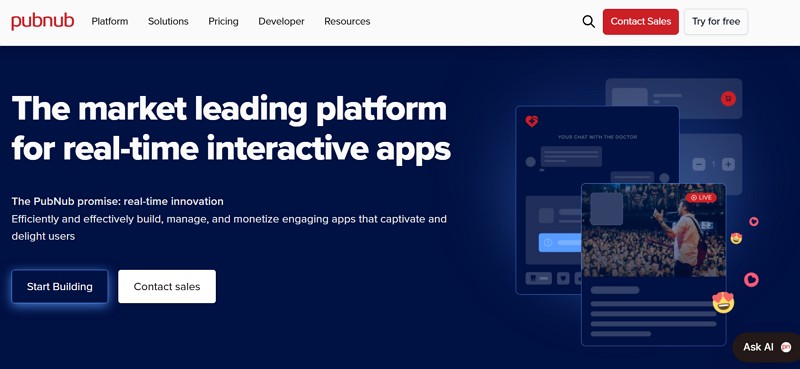
PubNub offers a global edge network that ensures ultra-low latency messaging across more than 1 billion devices. Furthermore, it provides features like typing indicators, unread messages, and read receipts. Plus, emoji reactions and advanced moderation for engaging conversations also help it stand out. With App Context, developers can also sync metadata across devices without building separate backend systems. Additionally, it delivers actionable insights without the constraints tied to GetStream pricing.
Key Features
- Broad SDK support is available for JavaScript, mobile, IoT, gaming, server, and embedded environments.
- Besides, PubNub Functions support serverless, real-time data transformation and routing within the platform.
- Additionally, Access Manager enables fine-grained, per-user or per-channel permission control and security.
Pros
- App Context syncs metadata across users and devices without needing a separate database.
- In addition, monitor fleet dispatch or geolocation status updates in logistics applications effortlessly.
Cons
- A 30-day data deletion notice is too short, raising management concerns.
- Hidden fees for storage, function executions, and beyond the base plan complicate pricing.
Use Cases
- Push notifications enable timely alerts and re-engagement through mobile and in-app messaging.
- Virtual events can use live chat and streaming to provide interactive experiences for the audience.
10. Rocket.Chat
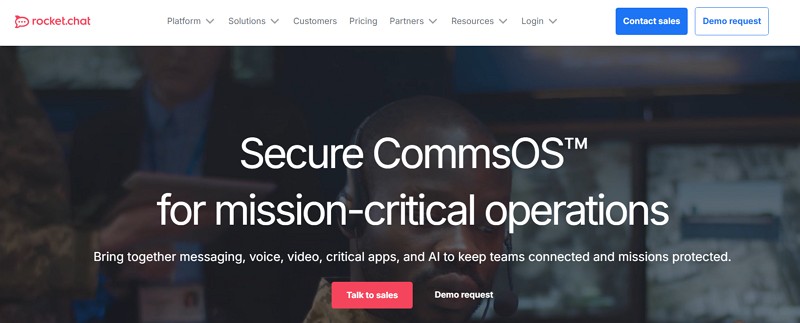
Rocket.Chat stands out among GetStream alternatives by offering a customizable communication platform designed for enterprises. It also allows deployment on-premise, in the cloud, or within air-gapped environments, giving teams complete control over their data sovereignty. Moreover, robust encryption ensures conversations remain private and compliant with strict security standards. Plus, its Apps-Engine and Marketplace support extensive customization, integrating effortlessly with tools like WhatsApp and Teams.
Key Features
- Supports omnichannel messaging, merging interactions from various platforms into a unified contact profile.
- Delivers unified contact history across channels, improving interaction context and operational efficiency.
- It also provides Matrix federation features, which allow safe cross-agency and decentralized team communication.
Pros
- Features conferencing tools such as screen sharing, whiteboarding, live chat, hand raising, scheduling, etc.
- There is also a lot of audit logging and messaging governance that makes communications accountable.
Cons
- Poor UI design leaves the conversation list cluttered and hard to manage for users.
- Push notifications are limited in functionality and unreliable in the community edition.
Use Cases
- Enables sovereign collaboration, citizen engagement, and emergency preparedness in public sector workflows.
- Facilitates cross-organizational collaboration and decentralized communication via Matrix federation.
How to Choose the Right GetStream Alternative
Opting for the right GetStream alternative ensures your app runs smoothly. Below, we will discover a few key points that you should consider before selecting the right platform among different Stream alternatives:
- Tech Stack: Ensure SDKs and APIs support web, iOS, Android, React Native, and Unity for smooth integration across platforms. So, choosing compatible platforms reduces development time and prevents unnecessary issues during app launch or future updates.
- Integration With External Services: Evaluate how easily the platform connects with analytics, storage, CRM, authentication, and workflow engines for efficiency. Here, seamless integrations improve functionality and allow your app to work with other tools without extra custom coding.
- Custom UI: Evaluate the flexibility of your ability to alter UI components and application workflows to suit branding and user needs. Moreover, flexible customization lets your app look unique while adapting to business logic and operational needs precisely.
- Compliance: Check HIPAA, GDPR, SOC 2 compliance, and end-to-end encryption to protect user data securely and reliably. Thus, prioritize alternatives with strong security measures to build trust with users and meet regulatory requirements effectively.
- Essential Features: Look for dedicated features like polls, file sharing, AI bots, and collaborative whiteboards to improve communication and app engagement overall. Hence, make sure these features match your app’s needs and enhance user experience without complicating workflows or development processes.
Conclusion
In summary, choosing the right GetStream alternatives for app chat, video, and activity feeds ensures smooth user experiences. Exploring GetStream alternatives helps developers find tools with better features, flexibility, and integrations for their projects.
Further, the analysis of performance, scalability, and security ensures quality communication and interaction. In these options, ZEGOCLOUD is the most versatile, low-latency streaming, AI-powered, and customizable UI option.
FAQ
Q1: What are the most popular alternatives to GetStream (Stream Chat)?
Many developers look at ZEGOCLOUD first because it not only supports in-app chat but also provides real-time video, voice, and conversational AI capabilities. Other commonly considered options include Sendbird, PubNub, Firebase, Twilio Conversations, Pusher, CometChat, Rocket.Chat, MirrorFly, and Agora.
Q2: Why do teams look for alternatives to GetStream?
Teams often want more flexibility, better pricing, or richer functionality. ZEGOCLOUD is attractive for developers building apps that combine chat with video, voice, or AI-driven features, making it suitable for social, gaming, or education scenarios. Others, like Rocket.Chat or MirrorFly, are chosen when on-premise or open-source solutions are required.
Q3: How does ZEGOCLOUD compare to GetStream?
ZEGOCLOUD offers a broader SDK suite that covers chat, video calling, voice chat, live streaming, and conversational AI, whereas GetStream focuses mainly on chat APIs. This makes ZEGOCLOUD a stronger choice when building interactive, multi-modal apps rather than text-only messaging.
Let’s Build APP Together
Start building with real-time video, voice & chat SDK for apps today!


